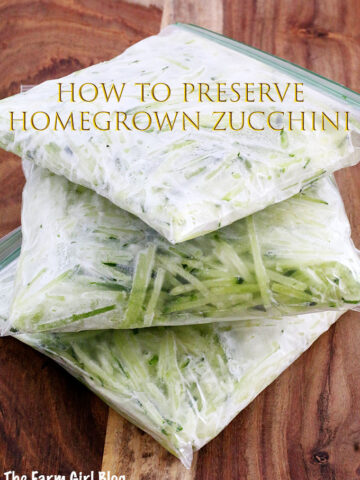Watering tomato plants properly is essential for growing plants. Unfortunately, it's one of the gardening techniques that many people get wrong.

Underwater the plant and you will starve it, leading to stunted development. When you overwater a plant, the roots rot and the plant grows poorly. And if you overdo it in any direction, you risk killing the plant!
Despite these cautions, watering tomato plants properly is simple. It may take some time to get the hang of it, but once you learn the fundamentals of when, where, and how much to water, you won't have to worry about damaging your plants.
In this article, you'll learn expert tips and tricks to know exactly when, why, and how much water you should be giving your tomato plants.
Table of Contents
Why Correctly Watering Tomato Plants is Important
Watering is clearly an important element of tomato plant care. Without water, plants won't be able to live. But knowing how much, when, and how to water is more than just a standard plant care task.
By properly watering tomato plants, you can avoid many common plant problems including stunted growth, root rot, blossom end rot, yellow and dropping leaves, low yield, and poor quality fruit. It'll also reduce the plant's susceptibility to other pests and diseases.
Most importantly, giving the fruit the right amount of water is good for it. Tomatoes are made up primarily of water, and the plant requires a great deal of it to produce fruit. To get a good crop, which is what every tomato gardener wants, you need to start by watering correctly.
How To Water Tomato Plants
Here are a few important tips to keep in mind when watering tomato plants:
Step 1: Water Slowly
Watering is all about consistency. For your tomato plants to continue growing, they require a steady supply of water. If you quickly water the soil every few days and leave the plant to its own ways, the plant won't get that steady supply.
When you water too fast and in large amounts, the water tends to run off instead of getting to the roots where it is needed. Watering slowly allows you to saturate the soil all the way down, not just the top layer. In the long run, the plants will get more water from this method than they would from flooding the soil with the same amount of water.
The good news is that you don't have to stand around and water your plants gently for hours if you don't want to. That's not necessary. Putting in a drip irrigation system will solve your problem and make watering much easier.
You can easily buy one and place it around your tomato plants, or you can just create your own using supplies you already have at home.
Step 2: Water Deeply
What's happening beneath the surface of the soil is just as important, if not more so, for your tomato plant than what's happening above it.
A healthy, productive plant relies on a robust root system. Deep watering the plant is one of the things you may do to support the development of a robust root system for the plant you're tending.
The plant's roots go deeper into the soil to absorb additional water when you water the soil gently and thoroughly. This provides the plant with access to more nutrients and encourages the development of a deep root system that will help it survive dry periods.
As a general rule, you should soak the soil at least 6 inches deep. A drip irrigation system, once again, can assist with this effort by supplying a continuous supply of water that penetrates deep into the soil rather than remaining on the surface layer only.
Step 3: Water At the Base
This is a basic rule that all new gardeners quickly learn, but it is so important that it's worth reiterating: water the soil, not the leaves.
When you water over the top of the plant, a lot of the water evaporates and stays on the leaves without doing anything for your plants. When water does reach the soil, it frequently does so unevenly, leaving some areas dry.
In addition to harming your plant's health, leaving water on the leaves for long periods of time can lead to the development of fungal diseases and even attract pests.
The water gets to the parts of the plant that need it through the roots. Avoid watering the leaves and instead concentrate on the soil around the plant's roots.
Avoid overwatering the area immediately surrounding the stem because this could wash away the soil or cause the stem to rot. For best results, concentrate on the small area of soil surrounding the plant and water gently and deeply.
To properly water a tomato plant, I like to make an indent in the soil around each tomato stem. This is important because it prevents from the water from running away from the plant. The run-away water is not only a waste but it also steals away nutrients from the soil.
Bonus Step: Mulch
You may believe that your work is complete once you have finished watering the plant's base slowly and thoroughly. But there is one more thing you can do to make your watering much more effective: mulching.
Although mulching offers many advantages, moisture retention is the most important one in this instance.
To keep the soil cool and to prevent water from evaporating, place a 2-inch layer of mulch around the base of your tomato plants. You will need to water your plants less frequently because the water stays in the soil for a longer period of time.
Even better, you need not spend any money. Mulch your garden with common materials, such as dried leaves or compost, and incorporate them back into the soil after they begin to decompose to add organic matter and nutrients to your plants.
How Often To Water Tomato Plants (Factors to Consider)
This is likely the most frequently asked question regarding watering. Unfortunately, there's no straightforward answer. Tomato plants don't have a set schedule, and simple advice like 'water every two to three days' doesn't convey the full picture.
There are a number of factors that will determine how often you need to water tomato plants:
1. Age or Size of Plant
Young seedlings require a lot of water during the first stages of growth in order to form deep roots. As the plant matures and its roots spread deeper into the soil, it will require less water.
Larger plants with deeper root systems will require watering more frequently than their smaller counterparts because of the greater rate at which they absorb and use the available water.
2. Temperature
The soil will dry out quicker in high temperatures, reducing the amount of water accessible to your plants. To make sure your tomato plants get enough water throughout the hot summer months, you may need to check the soil as often as once or twice a day.
3. Stage of Fruit
Tomato fruits require a lot of water as they grow. However, once the fruit has fully developed, too much water can cause the skin to crack. After the fruits form, watering less may help the tomatoes taste better.
4. Rainfall
After it rains a lot, your plants won't need watering for a while because they can get water from deep in the soil. Long durations of rain can also cause the soil to become excessively wet and soggy, resulting in root rot.
To ensure your plants consistently have access to an adequate amount of water, so neither too much nor too little, you will need to work around the rain. Check the soil and keep an eye out for rain to know when to water your tomato plants.
5. Containers
If you plant your tomatoes in containers, you will need to water them more frequently because the soil dries out faster.
Other Use Tips for Watering Tomato Plants
These are just a few of the things that affect how often you need to water tomato plants. Check the soil's moisture level once every day or two instead of sticking to a schedule that doesn't take into account what your plant requires at the right time.
Water your plants only after the top inch or two of soil has dried off. This will keep the plants from getting too much or too little water, which can happen when you water them on a set schedule. Instead, you will only water them when they need it.
Water your plants first thing in the morning. When you water in the middle of the day, which is usually when it is hottest, the water will evaporate before it can reach the roots. When you water in the evening, any water that falls onto the leaves and stem doesn't have time to dry, which can cause fungal diseases.
How Much To Water Tomato Plants
It's hard to say just how much water to give your tomato plants. According to experts, tomato plants require approximately 1.5 inches of water per square foot of soil each week. However, it might be challenging to translate it into the appropriate amount of water when the plant needs it. The amount can also change based on the things we've already talked about.
That is to say, rather than relying on a predetermined amount of water, it is preferable to check the soil before beginning to water and make adjustments as necessary. As long as you water slowly and deeply and don't soak the soil too much, the amount of water you give will depend on how the soil and plant look instead of on a set number.
Initially, watering may require some trial and error, but you will develop an intuitive understanding of your tomato plant's requirements through the process.

Did you find this post helpful?
Please follow me for more deliciousness on Facebook, Instagram, and Pinterest!
Need more information about growing tomatoes? Please check these posts out:






Leave a Reply